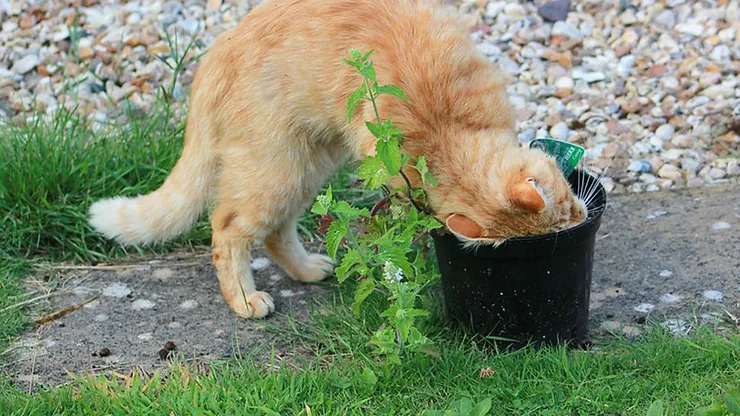By: Ray Wu
Catnips are now very special. Researchers recently discovered they release insect repelling chemicals. This discovery has led to thoughts about using catnips for bug repellents.
First, what are catnips? Catnips are a type of plant that seem to attract cats. A chemical named nepetalactone is what makes this plant so addictive to cats.
Catnip leaves release chemical compounds into the air, repelling insects. Crushed catnip leaves tend to release more of the chemical compounds. An iridoid is a chemical that repels insects.
Masao Miyazaki, a researcher atthe Iwate University, studied and analyzed catnip (Nepeta cataria) and silver vine (Actinidia polygama) with his team. The silver vine plant is commonly found in Asia. It acts just like catnip. Both plants were found to yield iridoids. That’s what gives them the ability to fight off pests.
While cats play around with the silver vine plant, the damage in the leaves stimulates the plant to release the iridoids because it feels threatened. Damaged leaves release ten times more iridoids than healthy ones.
The catnip plant releases even more iridoids than the silver vine, especially when crushed. Some crushed catnip leaves release 20 times more “bug repellent” than undamaged ones. Nepetalactone, the chemical addictive to cats, also seems to repel bugs. It takes up a major part of the iridoids released and produced.
Miyazaki and his team made iridoid cocktails. A cocktail is a type of alcoholic drink. The recipe was very similar to damaged catnip and silver vine leaves. The cocktails were very effective in repelling the insects within a certain radius.
Another test was to see if Nepetalactone was the chemical that really attracted cats. They gave the cats a choice: intact silver vine leaves or the damaged ones. The test went as expected. The cats loved the chemicals. The cats consistently chose the dish with damaged leaves.
Is nepetalactone safe to use if applied? Will it prevent the mosquito bites you get? Soon enough, we’ll find out soon!











